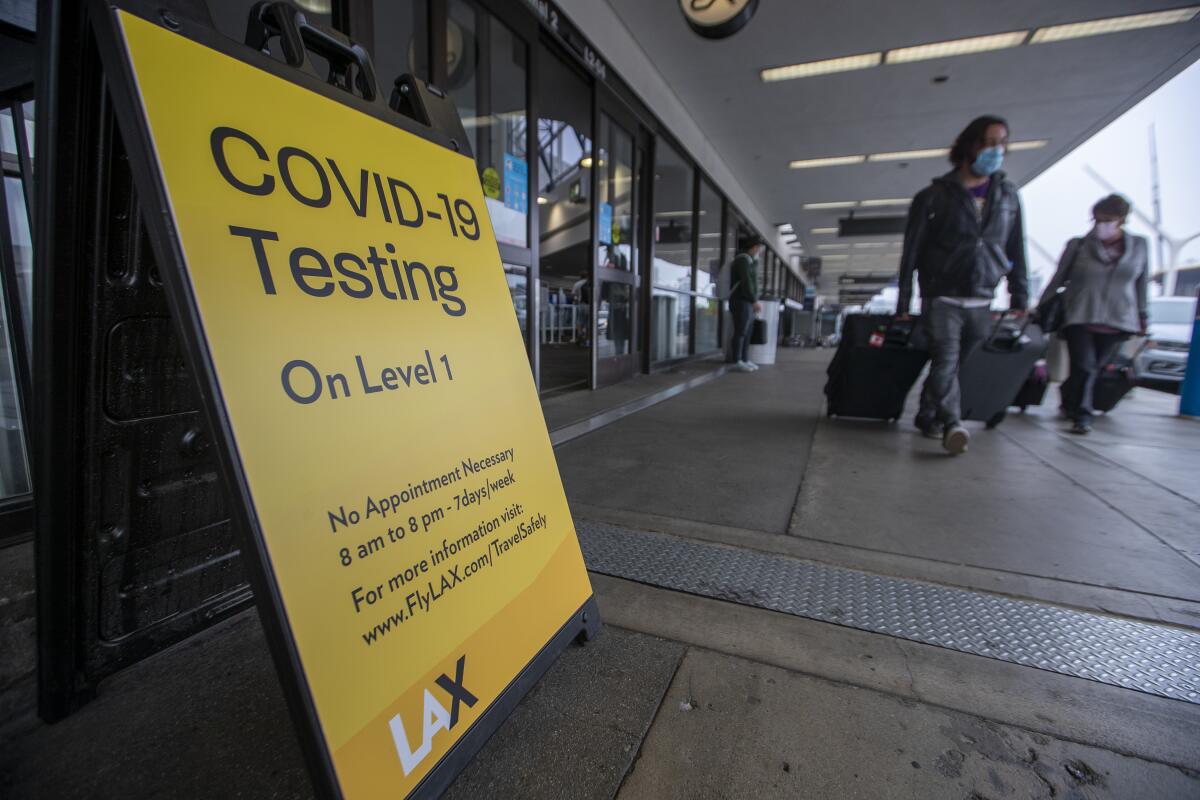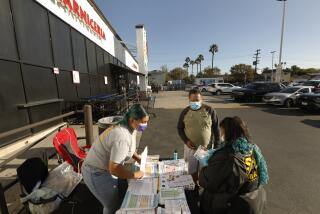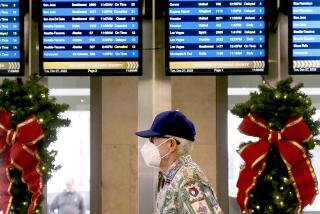L.A.’s rising COVID-19 deaths point to a horrific December. Can the trend be reversed?

- Share via
Los Angeles Mayor Eric Garcetti made a dire prediction last week: If the coronavirus continues to spread so rapidly, the death toll from COVID-19 in Los Angeles County will reach 11,511 by the end of the year.
Garcetti’s projection would mean that more than 4,000 Angelenos will die of COVID-19 in the next five weeks alone, more than were lost in L.A. County’s first four months of the pandemic. The mayor pleaded with Angelenos to stay home over the next few weeks and cancel Thanksgiving plans with people outside their households.
“Imagine if somebody said we could do something to make sure those lives were saved,” Garcetti said in a briefing Monday. “Isn’t that something worth fighting against? Aren’t those lives worth saving? You and I both know that answer.”
Coronavirus cases are increasing at an alarming rate in L.A. County, with a record number of people being infected last week. Though it can take several weeks for a sick person to succumb to the virus, an uptick in deaths has already begun, with the county reporting triple the number of average daily deaths than it saw on election day.
On Tuesday, county health officials announced that 51 people had died of COVID-19, the highest number of deaths on a single day in more than two months.
Experts say that with advancements in medical treatments and knowledge of the disease gained over the last nine months, they are hopeful that a smaller proportion of people who are infected with the coronavirus will die during this wave compared with the spring or summer.
But those improvements could be jeopardized by overcrowding at hospitals, as medical staffs are stretched thin and unable to provide the healthcare desperately needed to save the lives of the sickest patients, experts say.
“It looks like the mortality rate is going down over time,” said Dr. Christopher Petrilli, assistant professor of medicine at New York University, who recently published a paper that found large drops in mortality among patients hospitalized with COVID-19 in New York. “But we could see mortality rates go up as hospitals across the country get overwhelmed again.”
So does the crushing surge in L.A. County mean that 4,000 more people here will die before 2021? Though entirely possible, such an outcome is avoidable.
Inmates, including some on death row, are receiving unemployment benefits in what D.A.s call ‘the most significant fraud on taxpayer funds in California history.’
Garcetti’s projection assumes that the virus will continue to spread at the same rapid rate it has shown in the last two weeks, so that by the end of the year an additional 180,000 people will have become infected, roughly 2% of whom will die of COVID-19.
But it is not likely that spread will continue unabated for the next several weeks, given that county officials have imposed new restrictions. It’s likely that if transmission of the virus slows in the coming days, there will be fewer fatalities than Garcetti foretold.
But hundreds, if not thousands, could still die. Any changes in behavior Angelenos make now to reduce transmission of the coronavirus probably won’t bend the curve on hospitalizations for a few more weeks, because people infected last week can still end up in the hospital.
On Friday, 2,049 people in the county were hospitalized with COVID-19, 501 of whom were sick enough to be in the intensive care unit, according to The Times’ coronavirus tracker.
Among people in the ICU, two-thirds are typically on ventilators that help them breathe, according to L.A. County Health Services Director Dr. Christina Ghaly. Of those requiring ventilation, about half do not survive, she said.
“This is a serious disease and it should not be taken lightly,” Ghaly said in a recent news conference.
Ninety-three percent of the people who have died of COVID-19 in the county had underlying health conditions, such as chronic lung disease or diabetes. Forty percent were 80 or older, according to county data.
“Once hospitalizations go up, it’s inevitable that deaths go up,” L.A. County Public Health Director Barbara Ferrer said in a recent news conference. “Our hope is that they don’t go up as much as they did earlier in the pandemic.”
Over the last eight months, nurses and physicians have become better at treating COVID-19 patients. Doctors have learned that hydroxychloroquine, once touted as a lifesaver, isn’t beneficial — and sometimes is dangerous — while remdesivir and dexamethasone can improve patients’ outcomes.
Early in the pandemic, approximately 4% of people with COVID-19 in L.A. County died of the disease. But with improved treatments, increased availability of testing and a younger population becoming infected, the fatality rate has dropped below 2%, according to county data. (Though in line with national estimates, 2% is considered an overestimate of the virus’ true lethality because many coronavirus infections go undiagnosed, particularly those that are asymptomatic.)
Ali Mokdad, a professor at the Institute for Health Metrics and Evaluation at the University of Washington, said his research team analyzed data from 150 U.S. hospitals and found that the chance of a patient hospitalized with COVID-19 dying had dropped by 30% between April and August. He cited a variety of possible explanations, including physicians being more prepared for complications such as strokes and blood clots.
“Basically, when you make it to the hospital now, the chance of survival is much higher across all age groups,” he said.
L.A.’s problems are thorny and building consensus on how to fix them is tough. If I were Garcetti, I’d wave goodbye and head east.
But those gains can’t offset the unprecedented number of cases being reported daily, he said. The number of new coronavirus cases nationwide each day is about 200,000, more than double the previous record from July of roughly 75,000.
“Because the numbers are increasing rapidly, even with some improvement [in death rates], just sheer numbers are going to overcome that,” he said. “December and January are going to be very difficult for us in the U.S.”
Many experts warned that an already devastating situation could be exacerbated if hospitals become overwhelmed and are unable to treat all the patients in need. In L.A. County, current projections by health officials show that if the steep upward trends persist, hospitals will run out of beds in two to four weeks.
Garcetti warned Monday that the tipping point could come around Christmas. He mentioned the possibility of inviting medical teams from the military to help in the event of a continuing surge and said the Los Angeles Convention Center could be available for use as a field hospital.
“I had to make the decision about four months ago whether we permanently closed that down or kept it on life support,” he said, “and we have kept it on life support.”
Times staff writer Thomas Curwen contributed to this report.
More to Read
Sign up for Essential California
The most important California stories and recommendations in your inbox every morning.
You may occasionally receive promotional content from the Los Angeles Times.
















